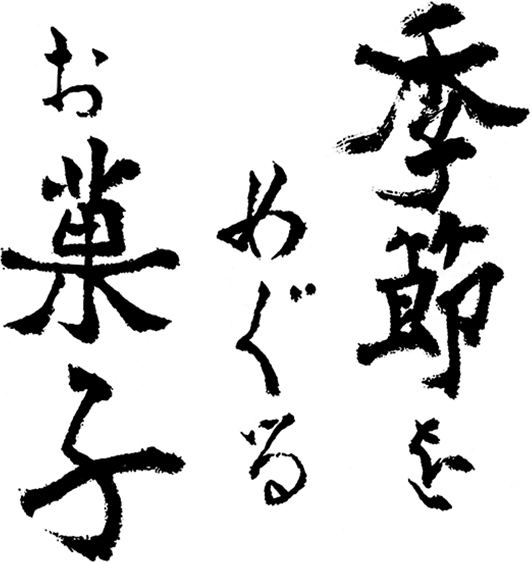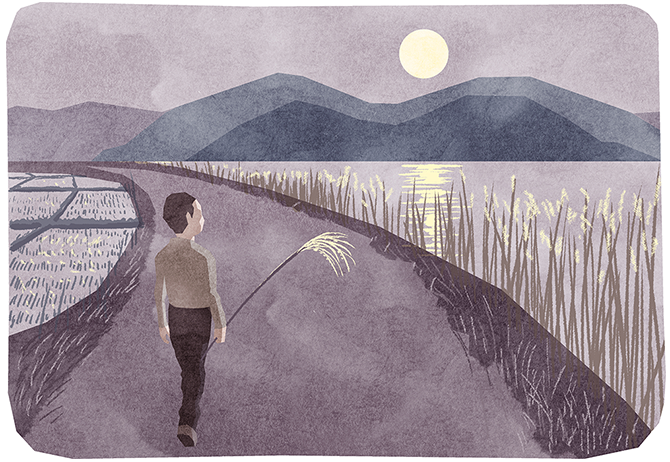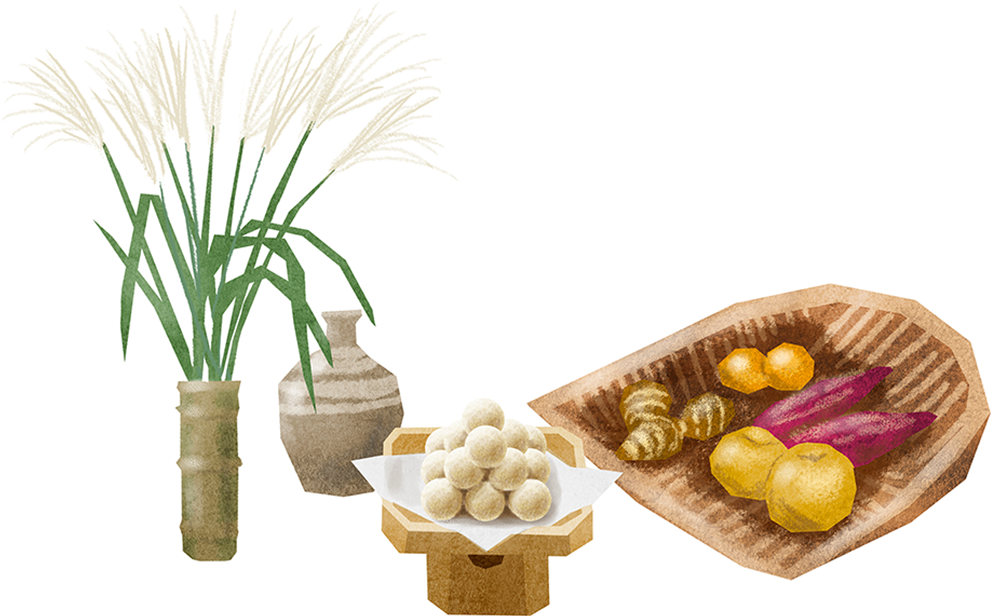 Confectionsfor All Seasons
Confectionsfor All Seasons
Autumn / About the confections and their origins
“Jugoya (15th night) and Jusan’ya (13th night)”

Jugoya’s other name is imomeitsuki
In 1872, the traditional Japanese calendar which used both lunar and lunisolar days was replaced by the Gregorian Calendar: as a result, traditional recurrences were transposed according to the new calendar. Even if the era changed, recurrences such as the jugoya (15th night) remained the same. When August 15th of the traditional calendar comes, modern Japanese make offerings to the moon and enjoy otsukimi (moon-viewing) as well.
The modern calendar is based on the movement of the Earth around the sun, so that every 365 days there is a year (called “solar year”). Instead, the traditional calendar is based on the moon’s phases. On the first day of the month there is a new moon (which means the moon is not visible). 15 days later there is a full moon. This means that people of the past, by observing the shape of the moon, were able to understand more or less what day it was.
The Moon of the fifteenth night is also called the “Mid-Autumn Moon” and refers to the moon visible on the 15th night of the 8th month of the lunar calendar. This recurrence only makes sense according to the old lunar calendar; in the Gregorian calendar, in fact, the date could shift from September to mid-October. For example, the “Mid-Autumn Moon” will be visible on September 10th in 2022, and on September 29th in 2023.
“Full moon thieves” was the most awaited moment
In the past, Omi’s countryside was illuminated by a few lanterns, and it was enough to turn them off to admire the beauty of the full moon even just staying at home. Moonlight descended on the pampas grass of the fields, illuminating it. The grass, moved by the wind, looked like a silver sea. Lanterns, so indispensable in the past, became superfluous on full moon nights. On this night, “full moon thieves” went around here and there in Japan. They walked around holding a long stick with a nail on top, using it to steal the dango offered on the altars. Nobody blamed them because they were children. They were said to taunt, “Give us the dango, or we’ll play a trick on you!”, just like on Halloween night which has become so popular in recent years. It was a joyful time for the children.

Jusan’ya is a recurrence unique to Japan
Jusan’ya (literally “13th night”) indicates the next full moon after jugoya, which is the Moon on the 13th night of the 9th month of the lunar calendar. It is also called “the next moon”. While jugoya is a recurrence that has origins in China, jusan’ya is exclusively Japanese. The moon of the 13th night is not yet full. The idea of perceiving the deepening autumn in that missing part is perhaps a typically Japanese aesthetic. Another name for jusan’ya is kurimeigetsu (Chestnut Harvest Moon) because harvested chestnuts are offered to this Moon.
However, fewer and fewer people are celebrating jusan’ya nowadays. While jugoya continues to be celebrated as part of a celebration for children, the same is not true of jusan’ya. Although we live in a hectic era, it would be good not to forget the bond that unites us to nature and its cycles.